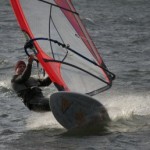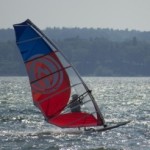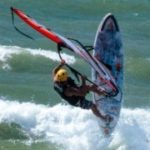Home Page › Discussion Forum › General Windsports Discussion › Getting Your Sail and Board "Dialed-In"
- This topic has 4 replies, 3 voices, and was last updated 5 years, 6 months ago by
 Geoff.
Geoff.
-
AuthorPosts
-
-
October 11, 2019 at 8:43 am #7616
 ScottParticipant
ScottParticipantGeoff, this is great stuff! Very valuable information. I could read this technical windsurfing tuning stuff all day long. Hope you write more for us.
I’ve read most of Eric’s technical articles on his blog and found it very helpful. I have been playing with my boom height adjustments this year and can relate to your observations. Thanks!
-
October 11, 2019 at 10:13 pm #7617
 GeoffParticipant
GeoffParticipantFor a guy who likes blasting like you do, Scott, the tips of Brad Duffy are priceless. In my experience, you’ll go a lot faster with less effort and make many more gybes. Hope you find this thread helpful.
I’ll have to think about the best way to describe Andy Brandt’s sail chi. If you haven’t been taught this conceptual model of sailing, it’s sort-of Monty Python-esque in the “And now for something completely different…” way. I spent a year unlearning almost everything I learned from Cort Larned before I really started getting it. But if you want to sail until you’re 85 (yes!), sail chi is what you need to know most of all.
And, hopefully, Hot Sails Maui will be still making Freaks when I get there, because old bones and shoulders like soft sails. And if I were pressed on advice, I’d suggest switching to soft transitioning sails before you have to, lest those hard POP!s make you have to go to soft sails.
-
October 13, 2019 at 10:25 am #7618
 mihelbergelParticipant
mihelbergelParticipantFANTASTIC post!!!! Love it! Thanks so much Geoff. I’m going to come back and read it several more times.
-
October 13, 2019 at 7:52 pm #7619
 GeoffParticipant
GeoffParticipantI’m just reporting what I learned from Brad Duffy. Knowing how to systematically adjust your boom height, mast base position, harness line center point, foot straps and fin so that you have them all balanced up and can sail relaxed and effortlessly is an extraordinarily important skill, and I haven’t seen anyone else teach it. In the Cort Larned clinics, we got a little bit of that because some of us were whining about it, but nothing as thorough and systematic as what Duffy said in his video.
Seriously, if you can find a copy of that videotape, you should buy it. It’ll be one of the most helpful instructional videos about windsurfing that you’ll ever see.
University of Speed
-
-
AuthorPosts
- You must be logged in to reply to this topic.
